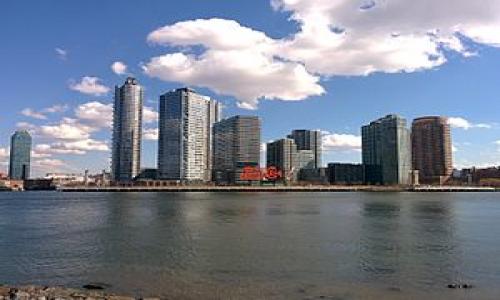Today, as I watched the Dow sink below 8,000, I wondered how the sell-off of the last six months compares to the sell-off during the Great Depression. The chart below shows what I found. To create it, I graphed historical data taken from the DJ Indexes website for the Dow Jones Industrial Average.

Let me explain how to read the chart.
The years 1930 and 2008 are time 0 on the x axis of the graph. I then looked at the 21 years before 1930 and 2008 to see how the markets performed before the 1930 and 2008 crashes. I also charted the 10 years after the crash in 1930, represented by the positive numbers on the X axis. The left Y axis shows the Dow's price during the early part of the 20th century and the right Y axis shows the Dow's price in more modern times. One other note on the methodology is that I used the closing price of the Dow on November 11 of each year.
As you can see by looking at the blue and pink lines, before both crashes there was a sharp run-up in the value of the Dow. But the data shows that the pre-crash bubble is much bigger now than it was prior to the Great Depression. While the Dow increased about 2.5x during the priod 21 years before the crash of 1929-1930, it increased over 6X from 1988 to 2008.
In 1929, with Black Friday, the Dow began to deflate and it hit a bottom in 1932. By that point, the Dow was down almost 75% from its peak a few years earlier. Today, the Dow has fallen about 42% from its high of 13,850. As the chart shows, if this economic downturn is not over and comes close to approaching the early severity of the Great Depression, then the Dow is not done falling. It's important to note that the largest damange to the market happened at the beginning of the Depression. While economic problems continue until the beginning of World War II, the stock market began to recover from its lows in 1936. What does that mean? It means that even if our current downturn doesn't last as long as the Depression, it could be as deep for a concentrated period of time, and during that time cause further equity losses.
I don't usually use Wikipedia as a source but I came across this entry on the Great Depression and thought it appropriate. You can decide if there are parallels to today:
The Great Depression was not a sudden total collapse. The stock market turned upward in early 1930, returning to early 1929 levels by April, though still almost 30 percent below the peak of September 1929.[6] Together, government and business actually spent more in the first half of 1930 than in the corresponding period of the previous year. But consumers, many of whom had suffered severe losses in the stock market the previous year, cut back their expenditures by ten percent, and a severe drought ravaged the agricultural heartland of the USA beginning in the northern summer of 1930.
In early 1930, credit was ample and available at low rates, but people were reluctant to add new debt by borrowing. By May 1930, auto sales had declined to below the levels of 1928. Prices in general began to decline, but wages held steady in 1930, then began to drop in 1931. Conditions were worst in farming areas, where commodity prices plunged, and in mining and logging areas, where unemployment was high and there were few other jobs. The decline in the American economy was the factor that pulled down most other countries at first, then internal weaknesses or strengths in each country made conditions worse or better. Frantic attempts to shore up the economies of individual nations through protectionist policies, such as the 1930 U.S. Smoot-Hawley Tariff Act and retaliatory tariffs in other countries, exacerbated the collapse in global trade. By late in 1930, a steady decline set in which reached bottom by March 1933.
The quote doesn't touch on the obvious parallels in the banking system. Although there haven't been as many bank failures, the magnitude of the financial failures today are enormous - Bear, Lehman, Fannie, Freddie, Wachovia, Washington Mutual, Countrywide, National Citi, AIG. I realize not all of these were failures but many of the banks listed were purchased at firesale prices to prevent a failure.
The question to ask yourself about this recession is whether you think it's like the relatively mild downturns of 2001-2002, and 1991-1992 and even 1980 or is it really the worst economic downturn since the Great Depression? Because if you believe the latter, then that blue line has further to fall.
For an update on this article from August 3, 2011, click here.














Comments
Bob Ross
May 07, 2010
A great man (My father) once told me that you can make a chart correlate anything, there was a famous picture of the New York skyline, that exactly fit a chart of the Dow for a given period of the 70's My point, anyone who truly knows what is going to happen won't be around until after it happens. Then they will tell you "See I told you so"
Is this review helpful? Yes:0 / No: 0
Joe Shmoe
May 22, 2010
The chart quality is so poor. Buddy, can't your afford a decent charting program?
Is this review helpful? Yes:0 / No: 0
the poker face
May 31, 2010
you all correct in a way to see what may happen in the future. the thing is that no one can fortell the future. just can tell you this in comparison to the great depression with our times now, the monopoly money game has come to something nobody is able to know whats happening. it seems that now people have become so brainwashed about what is going on around them, that it is easy for the masters of the system to sell whatever it likely to need for more of that pain. it looks like that we are just a few steps away from total eclipse of the system. better have something in your hand that can buy you safe passage than looking for the hand that gives you balsam, in other words be careful from the false prophets that are in sheeps wool!
Is this review helpful? Yes:0 / No: 0
stock
November 07, 2010
The stock market today is so crazy.The stock market will open higher tomorrow.
Is this review helpful? Yes:0 / No: 0
Add your Comment
or use your BestCashCow account